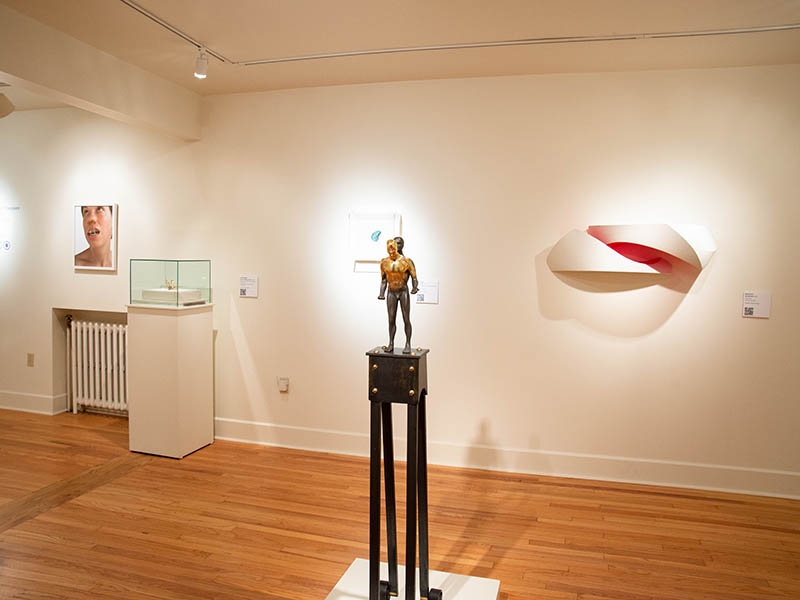
Olivia Shih: For our readers who might not be familiar with the Metal Museum, can you tell us what sets your museum apart from others that also showcase metalwork?
Nancy Cook: The Metal Museum is the only museum in the United States that focuses exclusively on the art and craft of fine metalwork. We’re also unique in that the focus of our collection and exhibitions is contemporary metalwork. So while we do have historic gates, locks, and tools in our collection, they’re there to provide context to the history of metalworking in the United States leading up to the present. I always say that the Metal Museum is more of an artist museum than an art museum. We strive to follow the entire course of an artist’s career, from emerging to late career. That was certainly part of the goal for us in presenting 40 Under 40—we wanted to identify artists whose careers we’ll be following in the future.
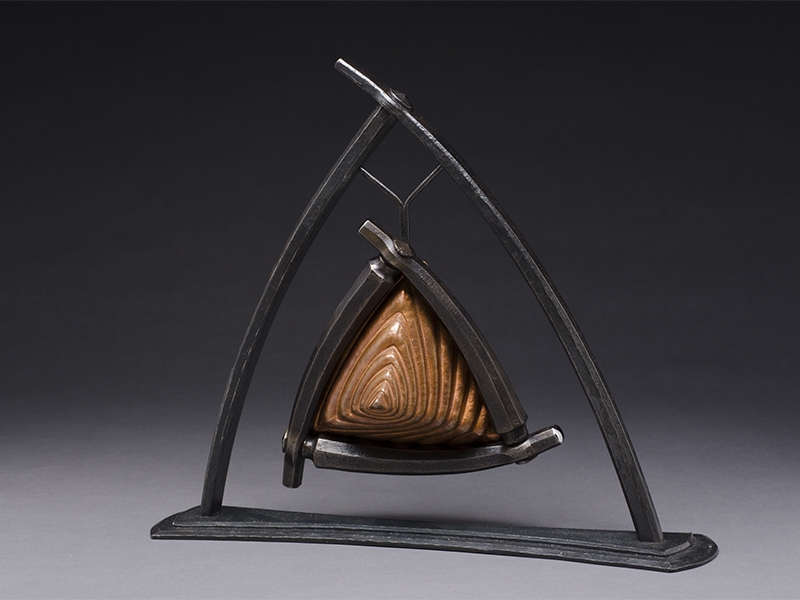
Grace Stewart: The Metal Museum is a unique institution because it is at once a museum, an art gallery, and an educational art center. A visitor to the museum can explore the artwork on display in the contemporary galleries and in the Visible Storage galleries; can browse metal specific books, images, and archives in the library; and can watch a demonstration or take a class in the fully functional smithy, foundry, or educational workspaces. Also, while other museums may include metal artwork and objects in their broad spectrum of visual exhibitions, only the Metal Museum is dedicated solely to metal works and metal artists and is able to deeply contextualize and honor this work within the history of the metals field.
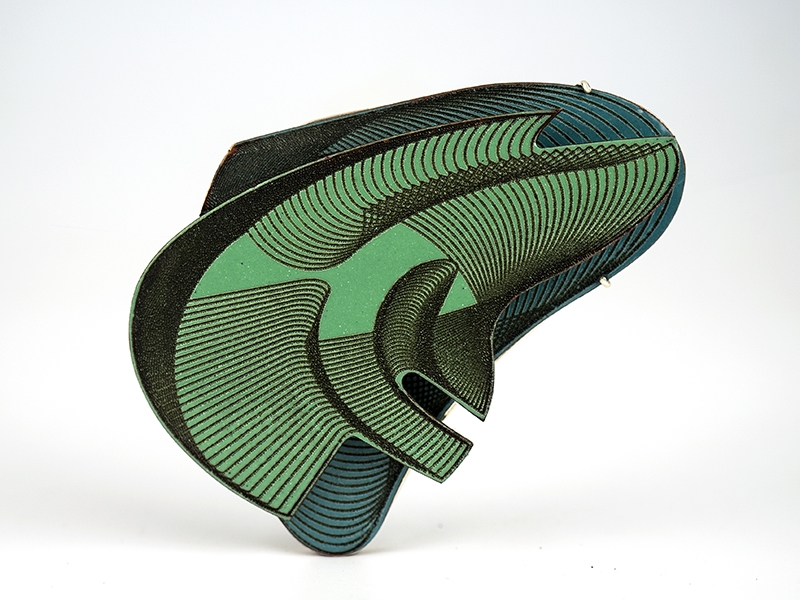
I’d love to talk about what went on behind-the-scenes for 40 Under 40. What role did each of you play in the evolution of this exhibition?
Grace Stewart: As the director of collections and exhibitions at the time of the planning of the 40 Under 40 exhibit, I was responsible for the initial development of the exhibition, including the theme, design, and general parameters of the show. 2019 is the 40th anniversary of the Metal Museum, and I wanted to create a lineup of exhibitions that celebrated that anniversary. The first show of the year was Crafting a Legacy, a look at works by the past Master Metalsmiths and Tributaries artists, drawing heavily from the museum’s collection. That was a show that looked backwards to honor the artists that had made the institution such an important asset to the field. 40 Under 40 was an opportunity to look forward at the next generation of artists who are shaping, and we predict will continue to shape, the field. The selection of the work in the exhibition was made with input from the artists on staff, artist advisors to the exhibition department, and ultimately the curatorial team. While I had a significant role in the development of the exhibition, I recently left my position at the Metal Museum and Nancy Cook took over all execution of the exhibit, including the final layout and installation.

Nancy Cook: When we first began talking about what exhibits might work for the Museum’s 40th anniversary maybe two or three years ago, Grace was certain about having an exhibit that focused on the future of the field, and the idea of including 40 young artists to celebrate 40 years came pretty quickly. At the time, Grace was our director of collections and exhibitions. She was handling big-picture things, and I handled a lot of the details and coordinating for exhibitions. Grace decided that the best way for us to put this together was via an open call. We didn’t want to necessarily invite artists, because we wanted to know that the artists involved were committed to the idea and excited about it. An open call was an easy way to acheive that.

Myself, Grace, and a few other staff members sat in our conference room and reviewed the over 150 applications we received for the exhibition. It was a difficult task to narrow down the selection to just 40 artists, but we managed it in just a couple of weeks. It was great to see that level of excitement in young artists. We didn’t know what to expect when we put out the call, but I think we found 40 artists under the age of 40 who not only make thoughtful and beautifully crafted objects, but are also committed to the field.

The metal arts field is constantly growing and redefining itself. What were your criteria when selecting work for this exhibition?
Nancy Cook: We knew we wanted the work to be diverse, and we wanted the artists included to be diverse. The only strict criteria for an artist was that they would be 40 or under when the exhibit opened. Otherwise, what we were looking for were artists from a diverse set of backgrounds. The subtitle for the show is The Next Generation of American Metal Artists, but there certainly was no citizenship requirement. It was enough to know that the artists were contributing to the metals field in America. The work itself also needed to be diverse. We wanted to represent many areas, including blacksmithing, casting, sculpture, tool-making, furniture design, enamels, jewelry, and bladesmithing. We managed to find fantastic artists in all of these categories. We’re also always on the lookout for metalsmiths who are both makers and artists. It has to be more than just concept or just design for us. It has to be both. These artists all make thoughtfully crafted work backed by important questions and concepts.

Grace Stewart: I feel it’s very important that the Metal Museum take an active role in supporting the diversity of the metals field. When I use the word diversity, I mean the diversity of the materials, processes, and forms of the work, but also the diversity of the makers. One of the first criteria for the curatorial team was to select work that spoke to the breadth of the field. The Metal Museum has always celebrated excellence in craftsmanship and technique and therefore mastery of materials and processes was an important criteria as well. Finally, there were a few logistical restraints we placed on the selection, such as requiring the work be recent, fit within the gallery, and be shipped within the United States.
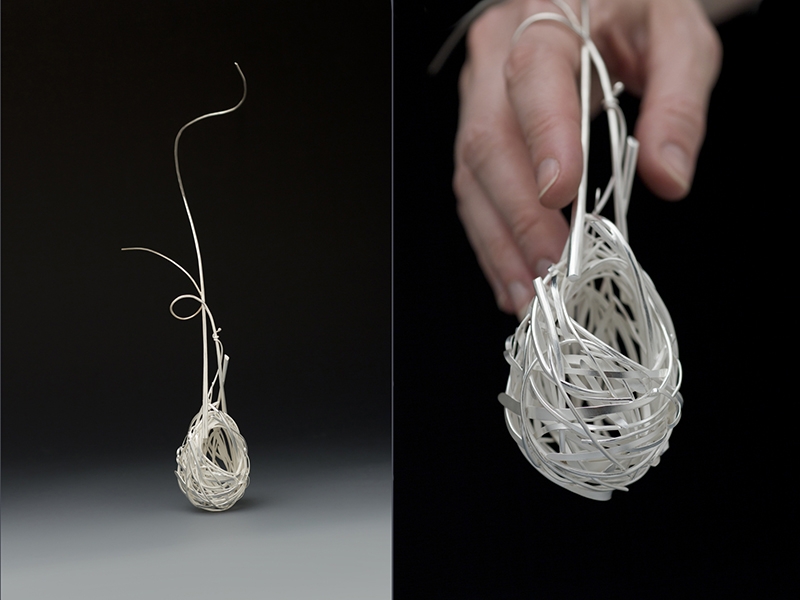
Emily Culver’s What She Saw / When She Walked In blurs the line between adornment and function, body and inanimate object. Two necklaces with tub-stopper-like pendants are scattered on a tiled platform that references the tones of human flesh. What drew you to this piece?
Grace Stewart: I was personally drawn to this piece because of its narrative quality and the use of familiar objects to elicit an emotional response from the viewer. The tub stoppers and tile floor evoke an environment where one is often vulnerable and often alone. Their use signals a sense of privacy that the viewer is invading, arguably with invitation from the artist. The work is not prescriptive in how the viewer should feel about these objects and this sense of vulnerability, and everyone can bring their own experiences, positive or negative, to their understanding of Culver’s piece. I’ve led many gallery talks during my tenure at the Metal Museum; works that allow this type of individual exploration are always my favorite to share with visitors. The imagery is common enough that everyone from art historian to preschooler can recognize it and has some experience with it. This access point then allows for deeper conversation regarding the power of plural truths, a conversation that our society can benefit from immensely.
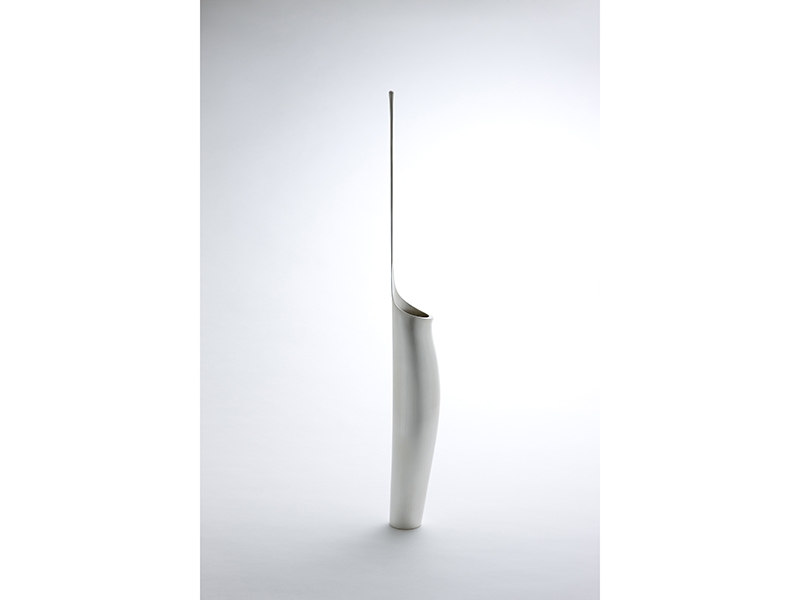
Nancy Cook: This was one of the first pieces everyone agreed should be in the show. Again, it’s thoughtful craftsmanship backed by important concepts. There’s this beautiful gradation in the enameled tiles, and the necklaces play with your sense of reality. They look exactly like rubber tub stoppers, but when you get closer you realize how incredibly well-made they are in metal. At first you might think the enameled tile is simply a way for Emily to display the necklaces, but it’s much more important than a simple display. The tile and the necklaces act together as components of the sculpture. Personally, the exploration of vulnerability in the work is what drew me in. When you walk up to the piece, you can imagine yourself in a bathroom with tub stoppers on the tile floor. There’s this moment where you can imagine yourself risking exposure and not being able to control the outcome. It’s both exciting and anxiety-inducing.
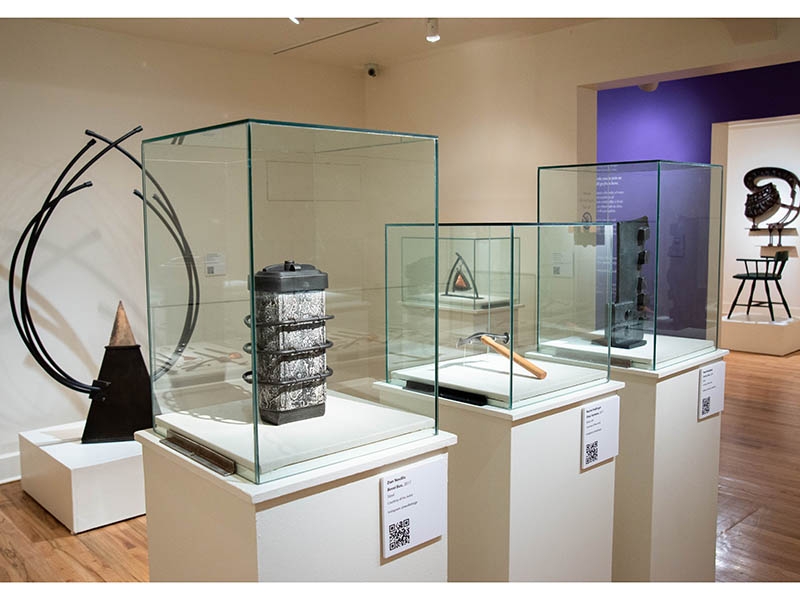
Lauren Kalman’s Device for Filling a Void simultaneously attracts and repels the viewer. The form of the object suggest a torture device from the dentist’s office; the golden color suggests luxury. When worn on the body, the device restricts and distorts the wearer’s face. What do you see in this piece?
Nancy Cook: I love Lauren’s work. She’s a former Tributaries artist, and I think we all agreed pretty quickly that we wanted this piece in the exhibit. I personally love the way visitors react to Lauren’s work. People tend to spend a lot of time with this piece, I think because it makes them uncomfortable. We have the object displayed alongside a photograph of Lauren actually wearing the piece. You can see the pain on her face. There’s sweat on her upper lip. But that discomfort is exactly what makes visitors spend time with the piece, really getting to know it. I’m not sure you can delve deep into concepts of beauty and adornment in our society while still being comfortable. Lauren’s work makes you sit with the discomfort. That’s unique and necessary.
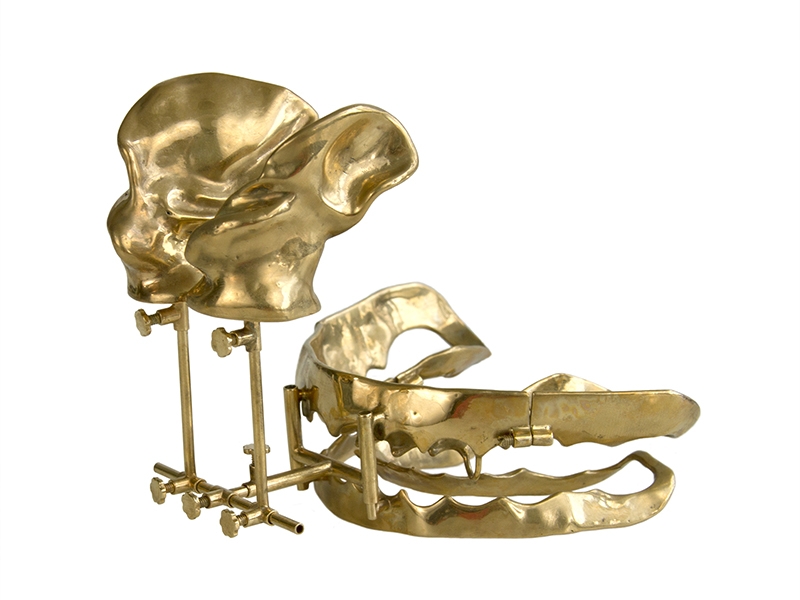
Grace Stewart: I’m a huge fan of Kalman’s work and I particularly enjoy this piece precisely because it does attract and repel at the same time. For me, it questions the very nature of dichotomies and illustrates the existence of false binaries. The notion that art, especially jewelry, must be beautiful and increase the wearer’s attractiveness stands trial in Kalman’s work. Conversely, the idea that imperfections, bodily messiness, and the parts of ourselves that we prefer to keep hidden cannot be alluring or deserving of examination is challenged here. I enjoy including works in exhibitions that encourage viewers to question their own assumptions and the collective norms of society.

The works in 40 Under 40 are innovative in both technique and concept. What new directions excite you the most?
Grace Stewart: I’m excited by the new voices in the field that are reminding us of perspectives and histories that have always been there but we haven’t always focused on and celebrated. I love to take something, sometimes an object, that I’m familiar with and view it through a new lens and realize I still have so much to learn about this thing I thought I knew. I’m glad we’re seeing more of that in the metals field as scholars reexamine and correct lopsided histories, and new, diverse artists challenge our notions of what’s normal, acceptable, and relevant.

Nancy Cook: I think the most exciting thing about many of the artists in the exhibit is that they’re marrying old and new technologies. Ben Dory is a perfect example of this. In his Black Sequin Ring, he uses granulation, which has been a decorative technique for millennia, but he’s updated it for the 21st century. Instead of applying granules and then firing the piece in a kiln, he uses a very small vacuum tube, similar to what they use at the dentist, to suck up granules and move them into place. Then a tiny electric shock from the tube is what actually fuses the granule to the piece. It’s like a micro-weld. The piece feels completely fresh and new, but it’s very connected to the history of granulation and jewelry.
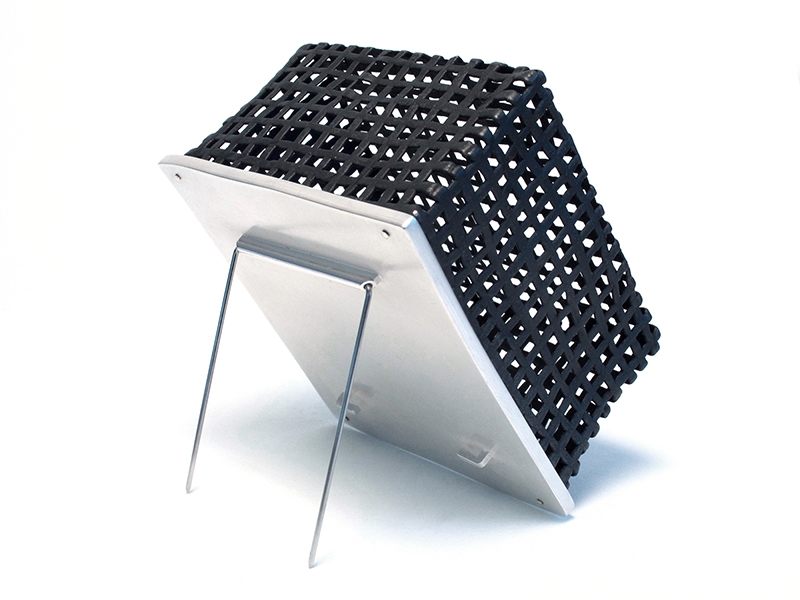
What’s the one thing I absolutely have to see if I visit the Metal Museum?
Nancy Cook: Well, as the exhibitions manager, I have to say always make sure you see our temporary exhibitions in the main museum building! Our next exhibition, Master Metalsmith: Sarah Perkins, will feature her enameled jewelry and hollowware and will cover both floors in the museum. It will open October 6, 2020.
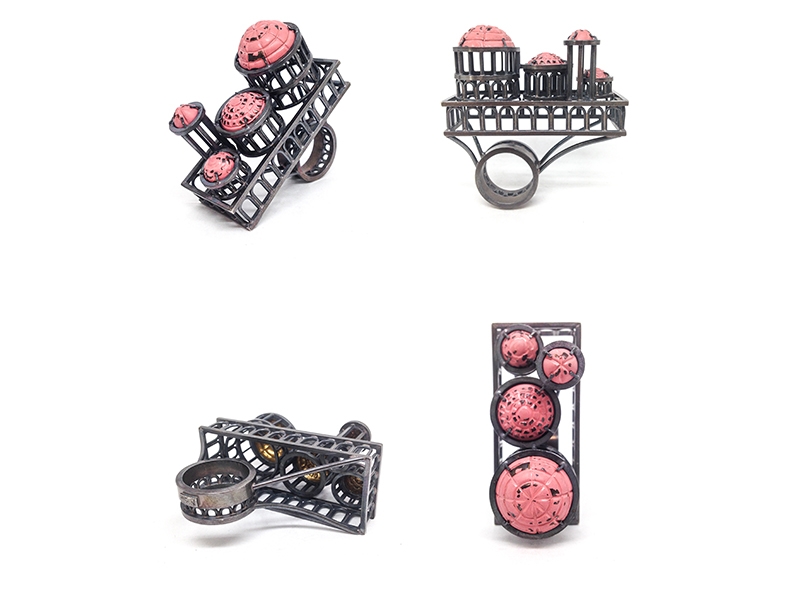
Grace Stewart: I’m sure I’m supposed to name my favorite piece in the collection or the next Master Metalsmith exhibit that promises to be amazing, and you should definitely see Sarah Perkins’s show, but I also think you should take a moment to find the museum’s most valuable and well-loved employees: the shop cats. Officially pest management, unofficially the museum’s mascots and morale boosters, Mr. Fuller and Spatz are one of my favorite parts of the Metal Museum.
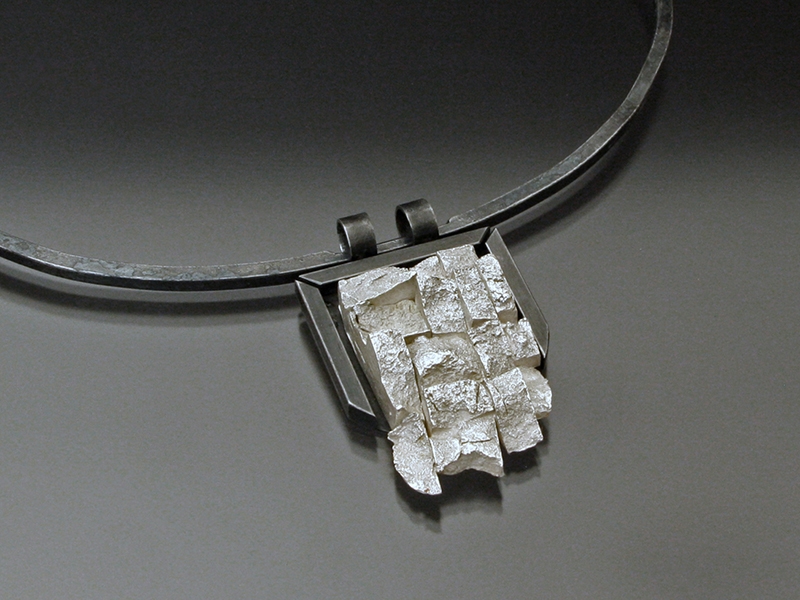
Finally, have you read or seen anything thought-provoking lately that you’d like to share with our readers?
Nancy Cook: I was lucky enough to see a small preview of Tradition of Excellence: Japanese Techniques in Contemporary Metal Arts, which opens at Penland in October, when I was in Chicago for the SNAG conference this year. The exhibit focuses on traditional Japanese metalworking techniques from both Japanese masters and American artists. It was curated by Hiroko Yamada, who owns HYART gallery and who also spoke at SNAG. The level of craft in the exhibition is stellar, and I only saw maybe 20 or so of the pieces that will be in the exhibit. I can’t wait to see the full exhibition at Penland!
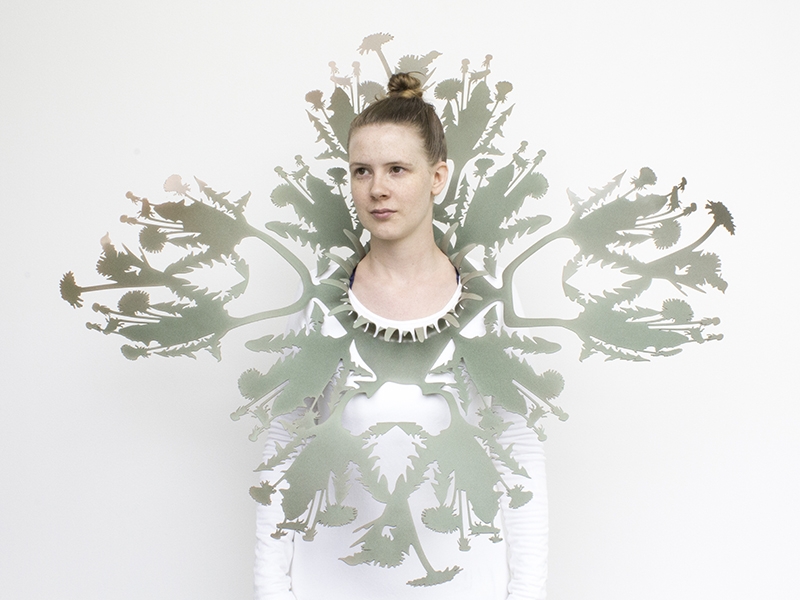
Grace Stewart: I’m not sure if this is quite what you mean, but I followed the artists’ boycotts at the Whitney and the resulting resignation of Vice Chair Warren Kanders[1] from the Whitney board of trustees with great interest. As artists explore new technologies, processes, materials, and concepts in their work, I think it’s important to remember the political and economic power artists hold as well. Artists shape the world through their representation of it, their questioning of it, and their reimagining of it, but also through their direct action and decisions to engage—or in this case, disengage—on a world stage.

Thank you.





